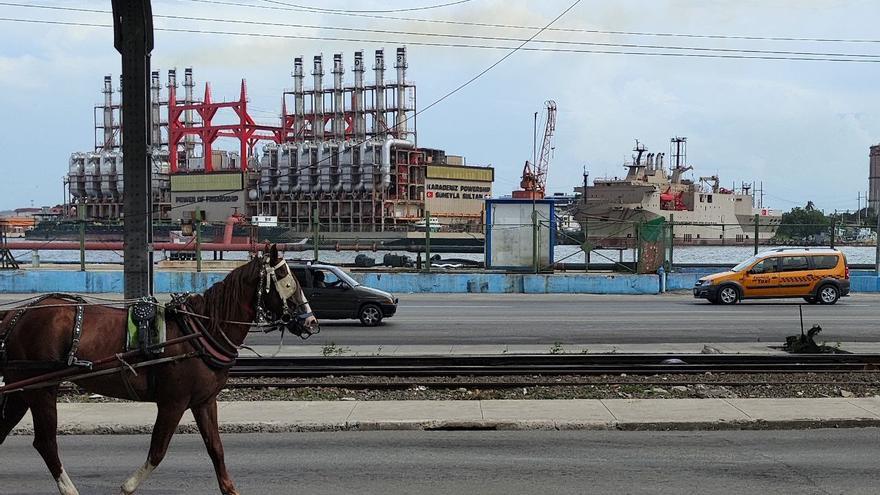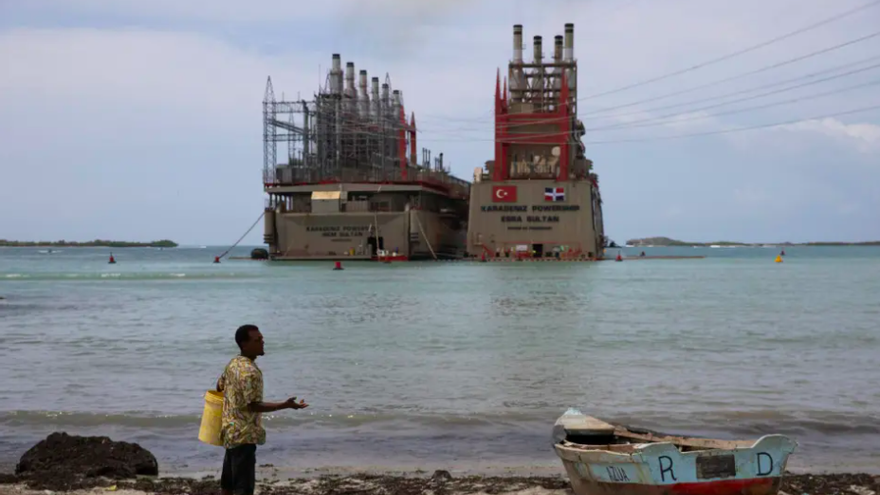
![]() 14ymedio, Juan Izquierdo, Havana, 23 August 2023 — One of the best kept secrets of the Cuban authorities is the cost of the Turkish patanas [floating power plants] that, since 2019, contribute to alleviating blackouts on the Island. Faced with the silence of those responsible, 14ymedio went to look for information in the Dominican Republic, which has contracted for two floating power plants (180 MW in total), for which it pays 40 million dollars for a duration of 42 months. If the same calculation is applied to Cuba, where there were seven patanas and now only five, with a capacity of 490 megawatts (MW), the cost would be 109 million dollars for the same period, or about 31 million a year.
14ymedio, Juan Izquierdo, Havana, 23 August 2023 — One of the best kept secrets of the Cuban authorities is the cost of the Turkish patanas [floating power plants] that, since 2019, contribute to alleviating blackouts on the Island. Faced with the silence of those responsible, 14ymedio went to look for information in the Dominican Republic, which has contracted for two floating power plants (180 MW in total), for which it pays 40 million dollars for a duration of 42 months. If the same calculation is applied to Cuba, where there were seven patanas and now only five, with a capacity of 490 megawatts (MW), the cost would be 109 million dollars for the same period, or about 31 million a year.
However, both the Cuban authorities and the directors of the Turkish company have been anything but transparent about the agreements. Maritime tracking applications do not offer up-to-date information on the position of the patanas, and it has been necessary for 14ymedio to send its reporters to the ports to visually check their presence.
Karpowership’s most recent promotional video, published on August 17, boasts of its presence in multiple countries in Africa, Asia and Latin America, including the Dominican Republic. Although Cuba does not appear on the map of the company’s partners in the region, the images show the most powerful patana hired by the Island – the Suheyla Sultan, 240 MW and connected to the Tallapiedra thermoelectric plant in Havana – but locates it in the Dominican port of Pueblo Viejo.
It is likely that this is due to the fact that Havana, unlike Santo Domingo, has not signed long-term contracts with Karpowership, only specific agreements. Another symptom of the instability of the Island’s patanas has been the intermittency of the supply of fuel oil for their operation.
In his report on Monday, the technical director of the Electric Union, Lázaro Guerra, assured that, after weeks of shortage, there was enough “fuel availability” now to start the patanas installed in Mariel, which were stopped by the oil deficit. The manager explained that other floating plants had suffered the same problem but guaranteed that the situation “has been improving.”
As 14ymedio was able to verify on Tuesday, the Belgin Sultan (15 MW) and the Suheyla Sultan (240 MW) are anchored in the port of Havana, while the Erin Sultan (130 MW) is connected to the Antonio Maceo thermoelectric plant on the Renté peninsula, at the entrance to the bay of Santiago de Cuba. The situation in Mariel could not be visually confirmed, since public access is restricted, but the images taken by Google Earth document the presence of two Turkish power plants, the Baris Bay (40 MW) and the Ela Sultan (65 MW).
Last July, during the sessions of the Parliament, the Minister of Energy and Mines, Vicente de la O Levy, reported that two patanas had left the Island after having “fulfilled their contracts,” which represented 170 MW less for the National Electricity System (SEN). The academic and specialist of the University of Texas, Jorge Piñón, points out that “the Turkish plants have been a lifeline for the SEN with a contribution of 2,591 GWh, 14.2% of the gross generation in 2022.”
The departure from circulation of both plants led to a controversy about a possible withdrawal of the Turkish ships, and the Cuban authorities are even more secretive about their management.
The minister then limited himself to insisting on the information he had offered to Parliament and said that six floating power plants were still operating on the Island. However, it is possible that he was counting the Karadeniz One, which is actually a tender, which returned to Havana on August 5 to replace a Turkish tugboat, the Gultekin Bey.

For their part, the Irem Sultan – which left Santiago de Cuba last April – and the Esra Sultan are in the Dominican Republic, whose government signed a contract with Karpowership last June to install them in a “definitive” way, after numerous discussions about the environmental damage they cause, in the coastal municipality of Pueblo Viejo de Azua, about 120 kilometers west of the capital, Santo Domingo.
The power plants are part of an energy project called Powership Azua, authorized by the National Energy Commission and managed by the Dominican subsidiary of Karpowership. Both run on fuel oil and have on board, according to government documents, “electric alternators, a substation, drinking water tanks, wastewater and sediments, liquid fuel storage tanks, offices and workshops.”
In addition, the project has a dock, a barge to store fuel and auxiliary facilities, which, added to the maintenance cost of the plant, total 42.8 million dollars. As for Cuba, floating power plants need similar conditions for optimal operation. Unlike the patanas in the Dominican Republic, the Cuban ones are directly connected to thermoelectric plants in Mariel, Havana and Santiago.
The patanas continue to be “the best deal” for Cuba in terms of energy, according to De la O Levy in February. The minister, who has referred on numerous occasions to floating power plants as a “great investment” that raises “concerns” in the population, has only gave a clear number: 17, the number of years that it will take Cuba to pay – through a monthly fee – a cost that the Government has not revealed.
Translated by Regina Anavy
____________
COLLABORATE WITH OUR WORK: The 14ymedio team is committed to practicing serious journalism that reflects Cuba’s reality in all its depth. Thank you for joining us on this long journey. We invite you to continue supporting us by becoming a member of 14ymedio now. Together we can continue transforming journalism in Cuba.
